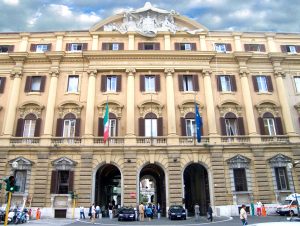2022, June 29. The 2022 Strategic Foresight Report, titled Twinning the green and digital transitions in the new geopolitical context, has been approved by the Commission today. The report identifies ten critical areas of work with the goal of maximising synergies and coherence between our climate and digital aspirations as we get ready to accelerate both transitions. By doing this, the EU will improve its ability to respond to emerging global problems between now and 2050 by bolstering its open strategic autonomy and cross-sector resilience.
In response to Russia’s aggression against Ukraine, Europe is stepping up its commitment to global leadership in the areas of climate change and digital technology, with a focus on pressing issues such as energy and food security, as well as defense and cutting-edge technologies. From this vantage point, the 2022 Strategic Foresight Report presents a future-focused and comprehensive analysis of the interactions between the twin transitions, taking into account the contribution of new and emerging technologies as well as important geopolitical, social, economic, and regulatory factors shaping their twinning, or their capacity to reinforce one another.
The twin transitions
The success of the twin transitions will depend on how inclusive and affordable they are. People with low and medium incomes are more susceptible to the effects and costs of the twin transitions, such as job automation, accessibility to digital solutions and digital public services, higher energy and food prices, financing investments in more energy-efficient buildings, or transportation inequity. Additionally, a divide exists between businesses that are technologically advanced and those that are not. These dichotomies may be made worse by regional differences in the degree of economic development and social flourishing. They might become more time-consuming and expensive as a result of labour and capital market friction. In this context, achieving environmental sustainability and climatic neutrality can only be viable in conjunction with policies that assist these groups in assuming the associated financial burdens and reducing inequalities. Closing these inequalities will depend on achieving the goals of the EU Digital Decade and the European Pillar of Social Rights, although additional action might be required. This is even more persuasive in light of the fact that individuals who emit the fewest emissions are those for whom the change is the most difficult to bear.
10 Key areas for action
The report identifies areas where a policy response is needed to maximise opportunities and minimise potential risks stemming from the twinning:
- Strengthening resilience and open strategic autonomy in sectors critical for the twin transitions via, for instance, the work of the EU Observatory of Critical Technologies, or the Common Agricultural Policy in ensuring food security.
- Stepping up green and digital diplomacy, by leveraging the EU’s regulatory and standardisation power, while promoting EU values and fostering partnerships.
- Strategically managing supply of critical materials and commodities, by adopting a long-term systemic approach to avoid a new dependency trap.
- Strengthening economic and social cohesion, by for instance, reinforcing social protection and the welfare state, with regional development strategies and investment also playing an important role.
- Adapting education and training systems to match a rapidly transforming technological and socio-economic reality as well as supporting labour mobility across sectors.
- Mobilising additional future-proof investment into new technologies and infrastructures – and particularly into R&I and synergies between human capital and tech –with cross-country projects key to pooling EU, national and private resources.
- Developing monitoring frameworks for measuring wellbeing beyond GDP and assessing the enabling effects of digitalisation and its overall carbon, energy and environmental footprint.
- Ensuring a future-proof regulatory framework for the Single Market, conducive to sustainable business models and consumer patterns, for instance, by constantly reducing administrative burdens, updating our state aid policy toolbox or by applying artificial intelligence to support policymaking and citizens’ engagement.
- Stepping up a global approach to standard-setting and benefitting from the EU’s first mover advantage in competitive sustainability, centred around a ‘reduce, repair, reuse and recycle’ principle.
- Promoting robust cybersecurity and secure data sharing framework to ensure, among other things, that critical entities can prevent, resists and recover from disruptions, and ultimately, to build trust in technologies linked to the twin transitions.





